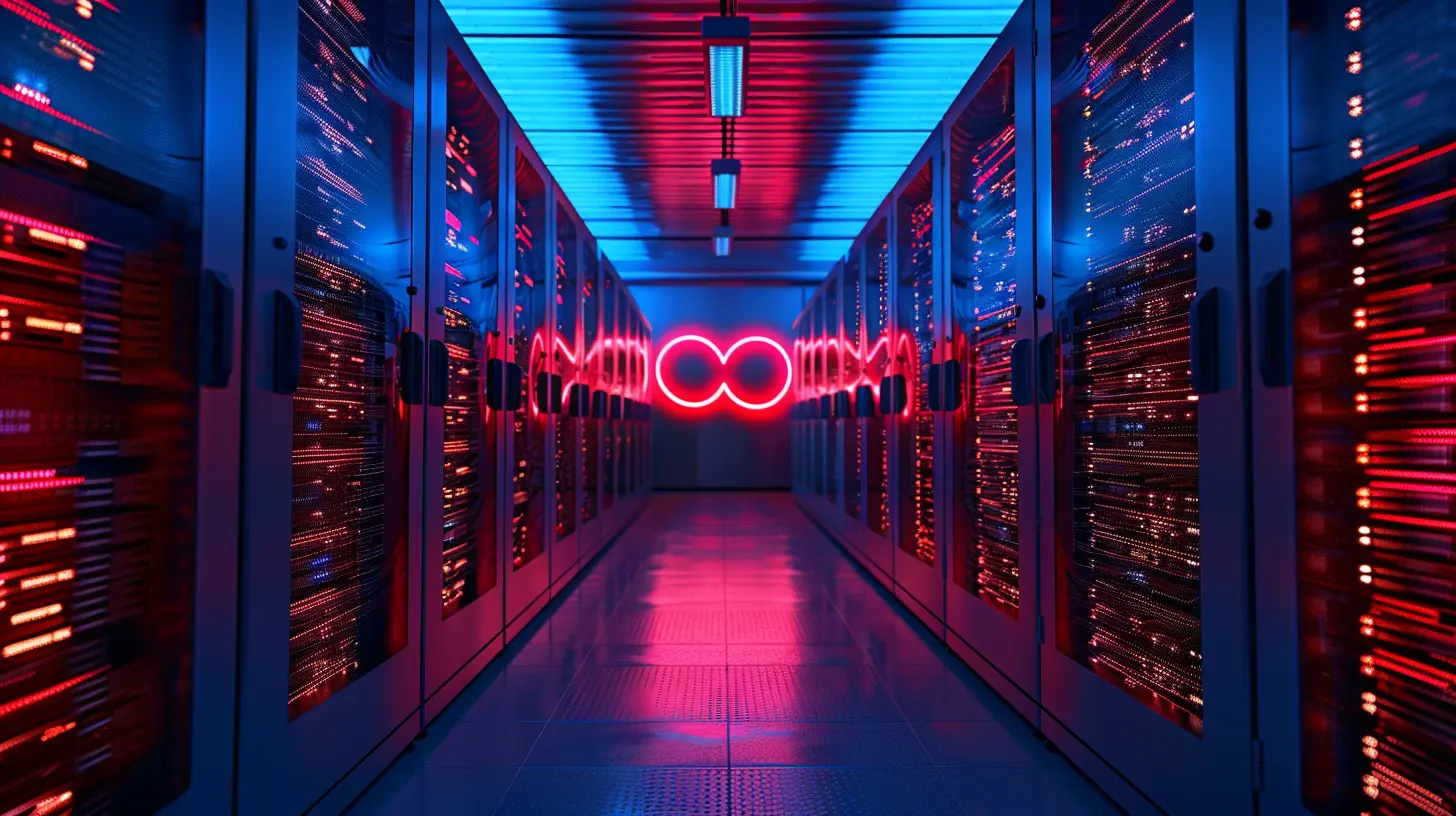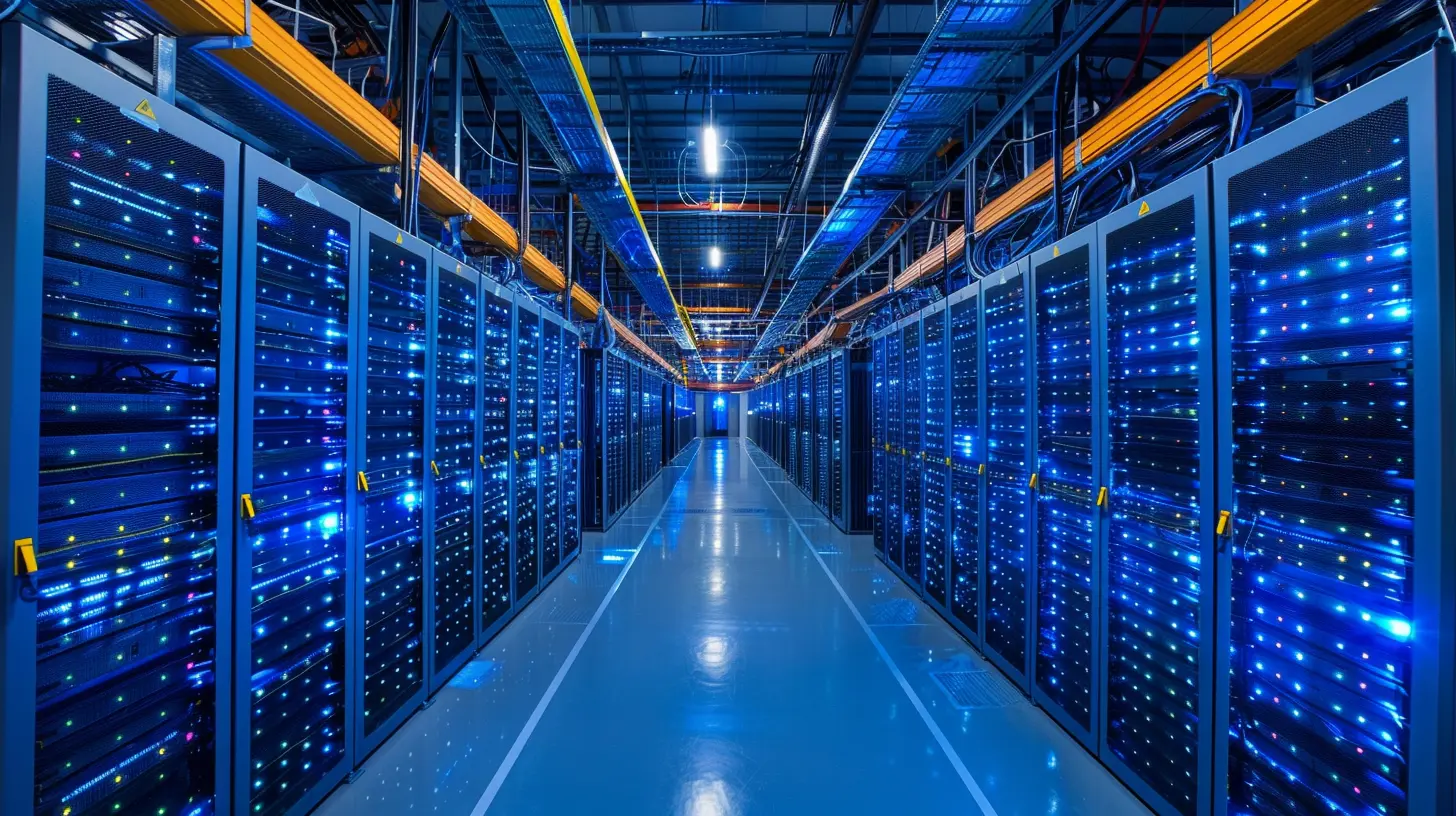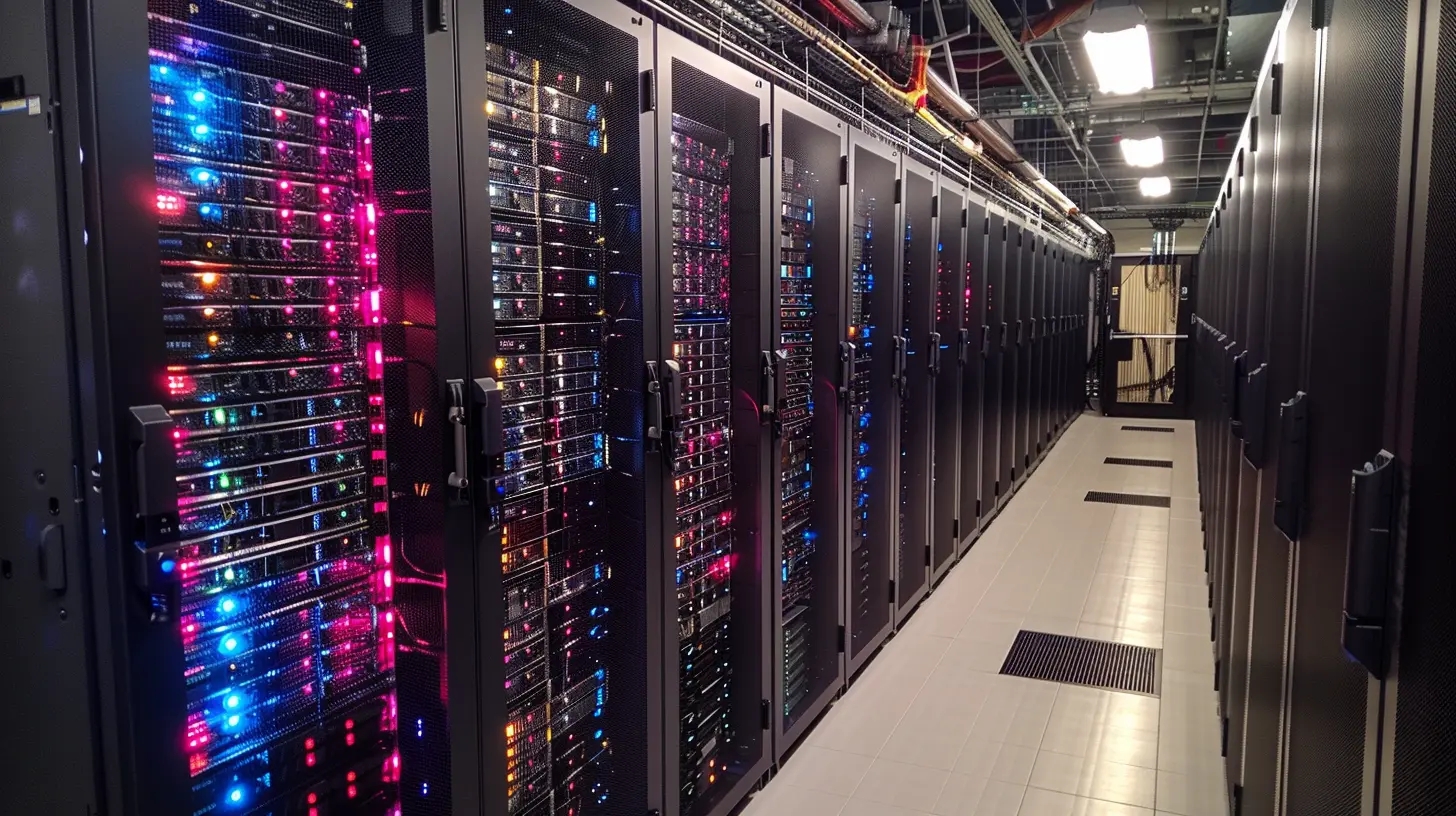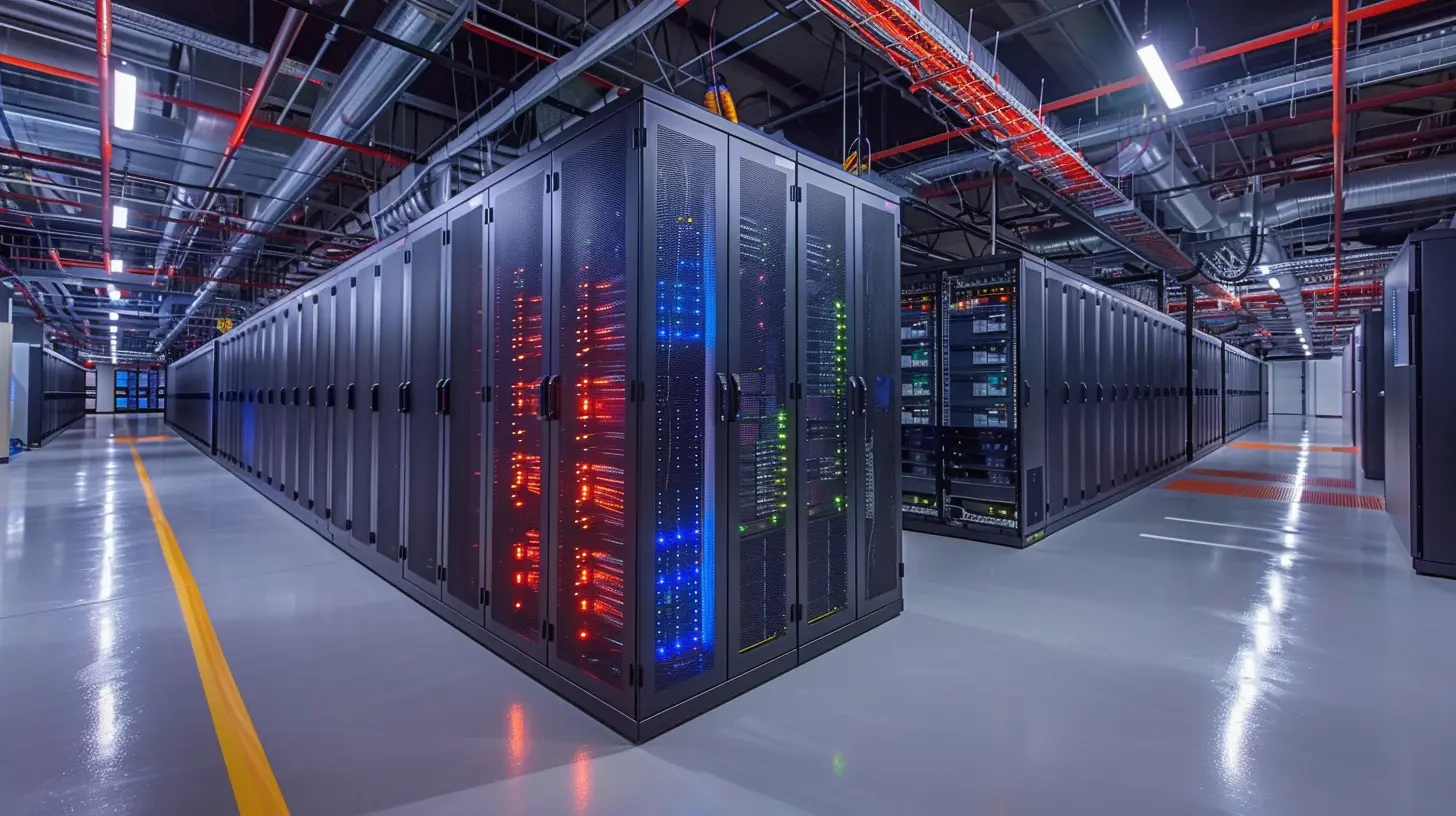Building a Future-Proof Data Center: Key Considerations
23 October 2025
In today's fast-paced digital world, data is the new oil. And, just like oil, it needs a secure, reliable place to be processed, stored, and managed. Enter the data center: the backbone of all things tech. But here’s the catch—technology is evolving faster than you can say "cloud computing," and building a data center that can stand the test of time is becoming more challenging than ever.
Whether you're a business owner, an IT manager, or just a tech enthusiast, building a future-proof data center is no simple task. So, how do you create a data center that’s not only efficient today but also ready for tomorrow? Let’s dive into the key considerations you need to keep in mind when planning and building a data center that can withstand the ever-evolving technological landscape.

1. The Importance of Scalability
Why Scalability Is Crucial
Imagine your business is an app. You launch it, and it takes off—suddenly, you're handling ten times more users than you initially planned for. If your data center isn't scalable, you're in big trouble. Scalability is all about growth potential. It's like building a house; you may start with a cozy two-bedroom, but if your family grows, you’ll need space to expand. The same principle applies to data centers.Plan for Growth
A future-proof data center needs to be able to grow with your organization. This means investing in modular designs where you can add capacity as needed—whether it's more servers, storage, or networking capabilities. The goal is to avoid having to rebuild or dramatically overhaul your infrastructure every few years.Always ask yourself: "Can this data center support my company's needs five or even ten years from now?" If not, rethink your design.

2. Energy Efficiency: A Must for Sustainability
Why Energy Efficiency Matters
Energy costs are through the roof, and data centers consume a massive amount of it. In fact, data centers are responsible for about 1% of global electricity consumption. That number may not sound enormous, but it adds up when you realize that this consumption is growing each year. Plus, with the global push toward sustainability, energy efficiency isn’t just a cost-saving measure—it’s a responsibility.Green Solutions for a Greener Future
To future-proof your data center, you need to think green. Consider energy-efficient cooling systems, like liquid cooling or using outside air, depending on your location. Additionally, renewable energy sources such as solar and wind power are becoming more accessible and can significantly reduce your data center's carbon footprint.Energy-efficient hardware is another consideration. Newer technologies, like ARM-based processors, are designed to be more power-efficient without sacrificing performance. By using energy-efficient solutions, you're not only saving money but also helping the environment.

3. Edge Computing: The Next Big Thing
What Is Edge Computing?
Edge computing is a game-changer. Essentially, it moves data processing closer to the data source, reducing latency and improving performance. This is particularly important for applications like IoT (Internet of Things) devices, autonomous vehicles, or any system that requires real-time data analysis.Incorporating Edge Computing Into Your Data Center
If you're serious about future-proofing your data center, edge computing needs to be on your radar. Think of edge computing as the "branch office" of your centralized data center. By distributing some of the processing power to the edge, you're ensuring that your data center can handle the demands of tomorrow's technologies.Consider hybrid architectures where both centralized cloud and edge computing work in tandem. This will give your data center the flexibility it needs to accommodate future workloads.

4. Security: It’s Non-Negotiable
The Increasing Importance of Cybersecurity
It's 2023—cyberattacks are more frequent, sophisticated, and damaging than ever before. In a world where data breaches can cost millions (not to mention destroy reputations), security is not something you can afford to take lightly. As the saying goes, "It’s not if you'll get hacked, but when."Building Security Into the Foundation
When designing a future-proof data center, security needs to be baked in from the start—not added as an afterthought. Implement multi-layered security measures, from physical security (like biometric access controls) to advanced cybersecurity protocols (like zero-trust architecture and AI-driven threat detection).End-to-end encryption, firewalls, and regular security audits are must-haves. And don't forget about disaster recovery; ensure that your data center has a solid backup plan in place for the inevitable "what if" scenarios.
5. Cloud Integration: The Best of Both Worlds
Why Cloud-Ready Data Centers Are the Future
The cloud isn't going anywhere—in fact, it's only getting bigger. But here's the thing: while cloud solutions offer flexibility, scalability, and cost savings, there are still scenarios where on-premise data centers are the better option. So, why not have both?Hybrid and Multi-Cloud Strategies
A future-proof data center should be cloud-ready, meaning it can seamlessly integrate with public and private clouds. Hybrid cloud solutions allow you to store sensitive data on-premise while taking advantage of the cloud's scalability for less critical workloads. On the other hand, multi-cloud strategies let you tap into the strengths of various cloud providers, ensuring redundancy and minimizing vendor lock-in.By building a cloud-ready data center, you're positioning yourself to take advantage of the best of both worlds: the control of on-prem infrastructure and the agility of the cloud.
6. Automation and AI: The Future of Data Center Management
Why Automation Is Key
Managing a data center can be like juggling a dozen balls simultaneously—one wrong move, and everything comes crashing down. Enter automation. By automating routine tasks like monitoring, patching, and even some troubleshooting, you can free up your IT team to focus on more strategic work.Leveraging AI for Smarter Operations
Artificial Intelligence (AI) is making waves in data center management. From predictive analytics that can foresee hardware failures before they happen to AI-driven cooling systems that optimize energy use in real-time, AI is a powerful tool for future-proofing your data center.The goal here is efficiency. Automating mundane tasks and using AI to enhance operations will not only save time and resources but also help your data center run more smoothly as it scales.
7. Flexibility in Design and Architecture
Why Flexibility Matters
The only constant in technology is change. A rigid data center architecture may meet your needs today, but what about tomorrow? New technologies, new business needs, and new regulations are bound to emerge. Your data center needs to be flexible enough to adapt quickly.Modular and Software-Defined Approaches
One way to build flexibility into your data center is through modular design. Instead of building one massive, monolithic structure, break it down into smaller, more manageable components that can be easily upgraded or replaced.Software-defined data centers (SDDC) are another option. By abstracting hardware into software, you can manage and allocate resources more flexibly, allowing for faster adjustments to changing workloads. Think of it as the difference between driving a manual car and an automatic—one requires constant input, while the other adjusts on the fly.
8. Cooling Systems: Efficiency Meets Innovation
Why Cooling Is Critical
Data centers generate an immense amount of heat, and keeping everything cool is essential for maintaining optimal performance. Overheating can cause hardware failures, downtime, and even permanent damage.Innovative Cooling Solutions
Traditional air conditioning systems are becoming less efficient as data centers grow. Innovative cooling technologies like liquid cooling, evaporative cooling, and even immersion cooling are making their way into data centers. These systems not only reduce energy consumption but also maximize cooling efficiency.Another emerging trend is using AI to manage cooling systems. AI algorithms can monitor temperature fluctuations and adjust cooling dynamically, ensuring that energy is used as efficiently as possible.
9. Location, Location, Location
Why Location Matters
You wouldn’t build a beach house in the middle of a desert, right? The same thought process applies to data centers. The physical location of your data center can have a significant impact on latency, energy costs, and even security risks.Choosing the Right Spot
When picking a location, consider factors like proximity to your end-users, climate (for cooling purposes), and even political stability. Some companies are even building data centers in colder climates to reduce cooling costs. Others are opting for locations with easy access to renewable energy sources. The key is to choose a location that aligns with both your immediate and future goals.
10. Compliance and Future Regulations
Why Compliance Is Non-Negotiable
In today’s world, data privacy and security regulations are tighter than ever—and they’re only going to get stricter. From GDPR to HIPAA, ensuring that your data center is compliant with both current and future regulations is crucial.Staying Ahead of the Curve
To future-proof your data center, you need to build it with compliance in mind. Stay updated on new regulations, and make sure your infrastructure can easily adapt to meet those requirements. This might mean investing in advanced encryption technologies or implementing more stringent access controls.Conclusion
Building a future-proof data center is no easy feat, but it’s absolutely essential in today’s rapidly evolving tech landscape. By focusing on scalability, energy efficiency, security, and flexibility, along with integrating cutting-edge technologies like edge computing, automation, and AI, you can ensure that your data center is not only ready for today but also prepared for whatever the future may bring.Remember, a data center isn’t just a building filled with servers—it’s the heart of your business’s digital operations. So, give it the attention it deserves, and you’ll be set for years to come.
all images in this post were generated using AI tools
Category:
Data CentersAuthor:

Reese McQuillan
Discussion
rate this article
1 comments
Selkie Monroe
Prioritizing scalability and sustainability is essential for future-proofing data center investments.
October 25, 2025 at 4:43 AM

Reese McQuillan
Absolutely! Scalability and sustainability are crucial in ensuring data centers can adapt to future demands while minimizing environmental impact.


